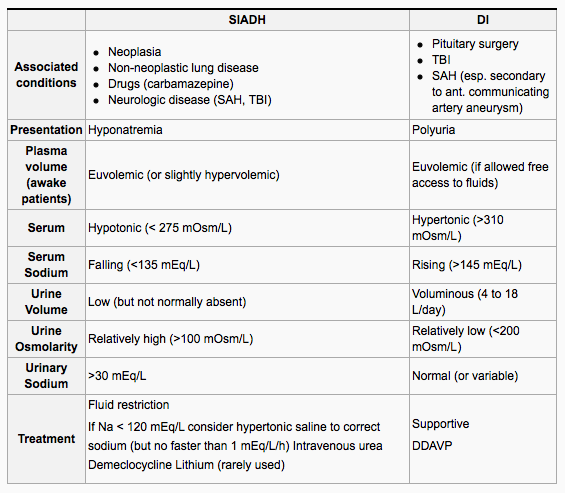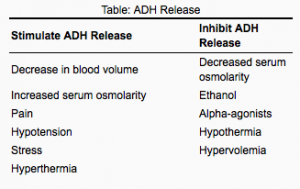Copy link
SIADH: Electrolytes
Last updated: 03/06/2015
Antidiuretic hormone (ADH) is synthesized in the supraoptic and periventricular nuclei of the hypothalamus and transported to the posterior pituitary by the hypothalamoneurohypophyseal tract. ADH is released by the posterior pituitary and serves to regulate the osmolarity of body fluids. In the kidney, ADH opens aquaporins in the distal and collecting tubules (in a cAMP-dependent mechanism) resulting in an increase in water resorption.
Oversecretion of ADH can result in the syndrome of inappropriate ADH (SIADH) while under-secretion of ADH results in diabetes insipidus (DI). Diabetes insipidus can also result from kidneys that do not respond to ADH (nephrogenic DI); however, this is relatively rare.
Clinical Pearls
- Patients with DI will frequently crave cold drinks
- In SIADH, BUN and creatinine are normal (or low) and serum uric acid is low.
- Overzealous treatment of DI results in SIADH.


Copyright Information

This work is licensed under a Creative Commons Attribution-NonCommercial-NoDerivatives 4.0 International License.